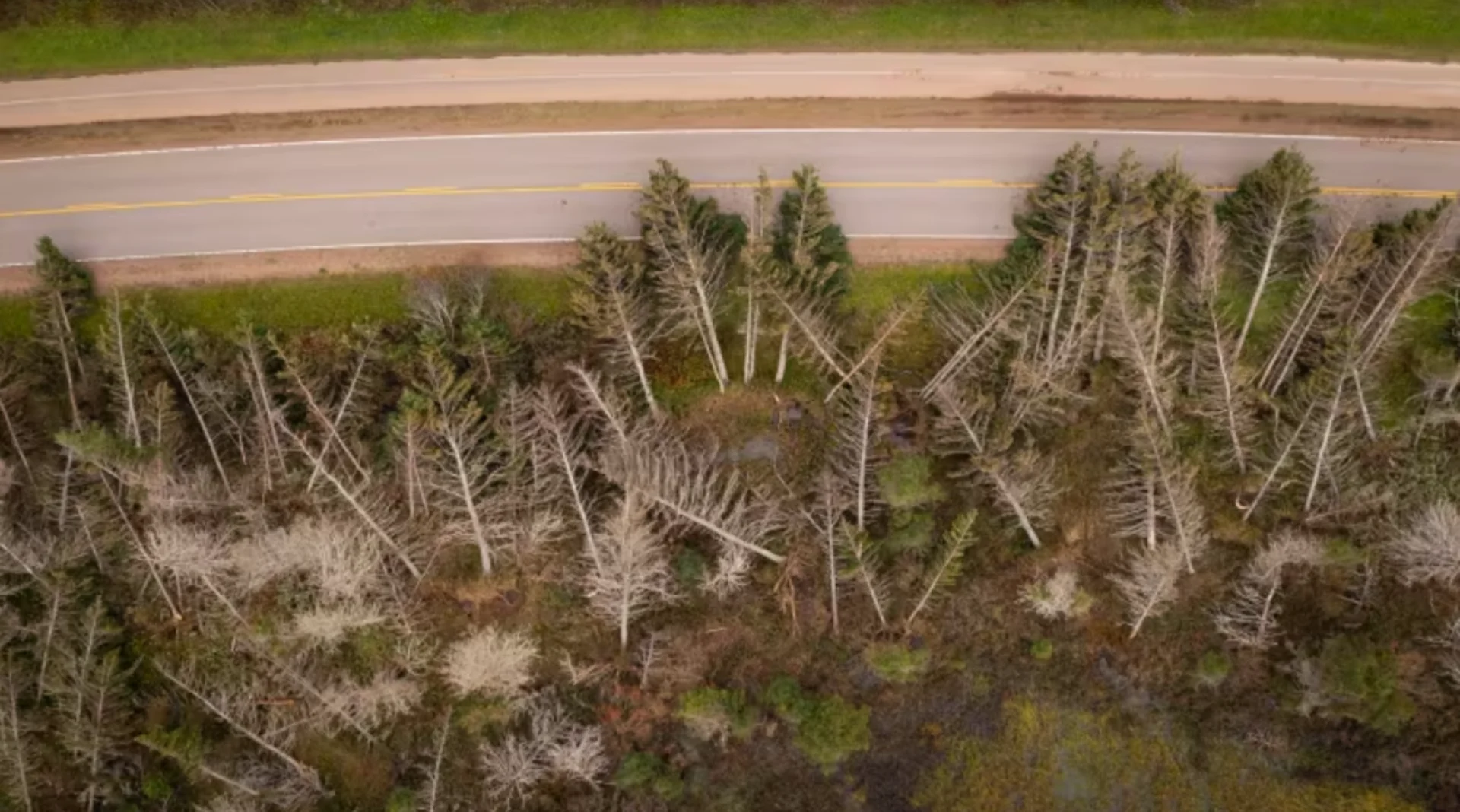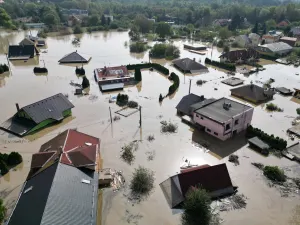
Fiona damage causing Island forests to emit more carbon than they capture
A new report from the province says it'll take at least 50 years for P.E.I.'s forests to grow back all the wood lost as a result of post-tropical storm Fiona two years ago, and the high number of felled trees means P.E.I. forests are now emitting more greenhouse gases than they capture.
The report used satellite images to provide a more accurate picture of how woodlands were damaged by the storm, compared with initial estimates.
"Quite simply, it's a more precise measurement ... of what happened as a result of Fiona," Jean-Paul Arsenault, chair of P.E.I.'s forestry commission.
The report says approximately 24,300 hectares, or 9.4 per cent of all forested areas, were significantly impacted, compared with the initial estimate of 13 per cent. The damage was most significant on the North Shore, where 23.3 per cent of forest was impacted.
SEE ALSO: Why a 'tree's job isn't done' after a storm brings it down
"Fiona hit when P.E.I.'s hardwoods were in full leaf, resulting in proportionately higher impacts to these trees than to needle-leaved conifers," the report said.
Matt Angus, the forest inventory analyst for the P.E.I. government, said the storm took down as many trees as would normally be harvested on the Island over the course of a decade.

Hardwoods, which were in full leaf when the storm hit, were impacted more than needle-leaved conifers, the report says. (Shane Hennessey/CBC)
But he said the amount of wood still available is far more than what has been needed in the past.
"So we're not really worried about the sustainability of our forest in that respect. But to recover to pre-Fiona events, it looks like at least a full tree generation."
As a result of Fiona, the report also said P.E.I.'s forests have become a net producer of greenhouse gases, because healthy standing trees absorb carbon while fallen trees decompose and can emit carbon.
"We lost 24,000 hectares, that is 24,000 hectares that is no longer sequestering carbon from the atmosphere and on the other side of the same coin it's all emitting that slowly as it sits and decomposes," Angus said.
DON'T MISS: Turning wool into pellets may reduce waste, help farmers weather climate change
It's expected to take two decades before the Island's woodlands start taking in more carbon dioxide through regrowth, than they release into the atmosphere.
In December 2022, the province implemented a salvage incentive for private woodlot owners. That incentive remains in place, and more than 650 hectares have been salvaged, according to the report.
It said moving forward, it said planning for climate-friendly species alone is not enough, and maintaining diversity is key.
"For example, red oak and white ash are two species predicted to do well under future climate scenarios but are also threatened by disease [oak wilt] and insects [emerald ash borer] which must also be considered," said the new report.
The final report of the forestry commission is expected in December 2024. The P.E.I. government said it will review the report and recommendations, with a view to creating new legislation followed by an updated policy that will "serve Islanders and their forests for the coming decades."
Thumbnail image credit to Shane Hennessey/CBC News.
This article was originally written by and published for CBC News, with files from Laura Meader and Kerry Campbell.









